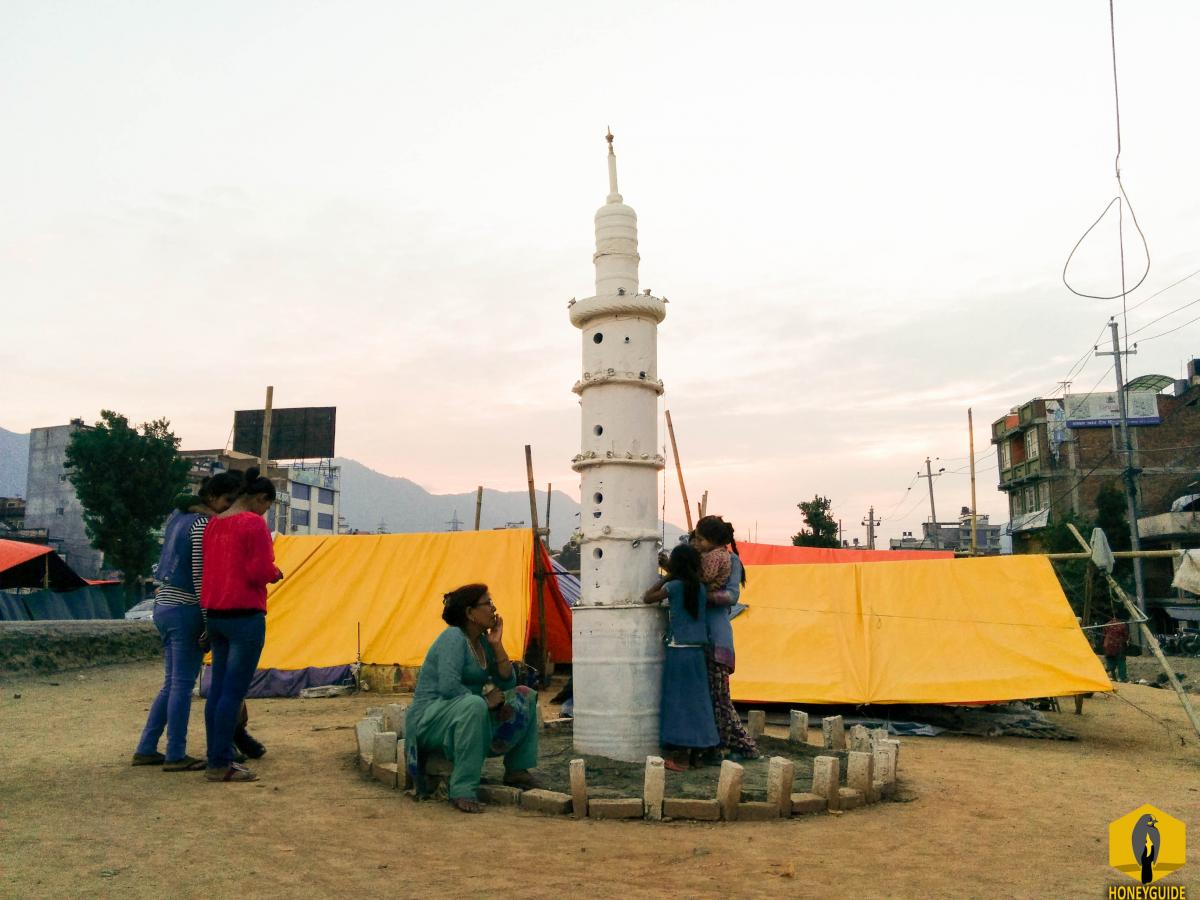The powerful 7.8 magnitude earthquake of 25th April, 2015 consumed many of the iconic structures of Kathmandu Valley and instilled fear in all Nepalese. As we write this blog there are still fears of aftershocks, reignited by a strong aftershock of 7.3 Richter scale on 12th May, 2015. The most recent one being just today morning at 7:27 am NST of 4.9 magnitude. The first major earthquake in 80 years also took along with it the darling tower of Kathmandu, Dharahara.
History
Dharahara, also known as Bhimsen Stambha (Tower) was perhaps the most iconic structure of Kathmandu. It was built in 1832 A.D at the center of Sundhara. Built for the primary purpose of a watch tower by the then prime minister, Bhimsen Thapa, the nine storey spectacular is said to have been built for Queen Lalit Tripure Sundari, niece of Bhimsen Thapa. Bugles were blown from the top of the tower when incidents of national importance occurred and this trend continued until the collapse. Dharahara wasn't always a 9 storey tower, it used to be 11 storeys high until the great earthquake of 1934 brought it down to rubbles. The then prime minister of Nepal, Juddha Shumsher subsequently carried out renovation works and rebuilt the tower, only this time restricting its height to 9 storeys with a balcony at the 8th floor.

Interesting Facts/ Myths
- At the time of its construction, Dharahara was the tallest building in Kathmandu Valley, as a military watchtower should be.
- The tower had a spiral staircase containing 213 steps and a 17-foot bronze mast as the finial. It stood at a height of 203 feet.
- A deity of Shiva was placed at the top of the tower and so, was also religiously linked.
- The architecture of Dharahara was designed in both Mughal and European style.BhimsenThapa was a known admirer of the Mughal style as is evident by his palace, now demolished, which was Mughal in style with a fair amount of Kathmandu Gothic thrown in.
- The main materials used in the tower construction were Vajra-Surki (Brick dust), Chuna (Lime), Mas (Black lentil) and Chaku (Caramel). The combination of these materials are considered to be much stronger than the now common cement.
- Amongst the many myths Kathmandu is surrounded by, one is related to Dharahara and the most famous and fearsome Rana Prime Minister of Nepal, Jung BahadurRana. Legends has it that "The White Tiger" rode on a horse back and climbed upstairs to the balcony of the tower. What he did next was daring to many and plain stupid to some. He jumped off the balcony on the horseback! The horse died from the jump but "Jungey" survived. One of his daring acts among many.
- Another structure which goes by the name of KalMochan, partially credited to BhimsenThapa was also flattened in the 2015 Earthquake. Partially credited, because BhimsenThapa started the construction but the foundations were hardly complete when he was forced to commit suicide. Later, Jung BahadurRana, also Bhimsen’s grandnephew completed the temple. Just to kill some curiosity about why he committed suicide: BhimsenThapa was falsely told by his tormentors, who had much to avenge, that his wife was being forced to walk the streets of Kathmandu stark naked. In great anguish, he broke a window pane and slashed his wrists inside the cell where he was kept prisoner.This imposingly large white temple was set in an extensive courtyard besides the river Bagmati. Many have seen this great white Mughal style temple on the way to United World Trade Center from Bagmati Bridge but few know its name and the story behind it.
April 25, 2015
The tragedy this day brought onto the lives of Nepalese is still fresh in our memories. We are still being reminded of the darker side of Mother Nature with every aftershock that still shakes the ground and hearts of millions.
At 11:56 NST the most powerful earthquake in 80 years swept away many of the iconic structures of Kathmandu valley; Dharahara didn’t escape the wrath of nature either. According to bystanders present at the site when the earthquake struck, there were clouds of smoke that consumed the area and screams were heard from the rubbles. Nepalese Army blocked off the entrance to the tower and started the rescue operations. It was later confirmed that 180 bodies were retrieved from underneath the rubbles.
Some people were seen collecting the bricks from Dharahara probably to keep them as souvenirs. Those bricks had Juddha Shumsher's name inscribed in it which indicates that the tower was rebuilt during Juddha Shumsher's reign. But given the fact that people had died there, taking bricks from the spot as souvenirs was probably not the wisest and empathetic thing to do.
Desmond Doig in his book, “In the Kingdom of the Gods” wrote this as his closing lines about the Dharahara: “When all else is swept away, one hopes the handsome minaret will remain as a monument to a great, if ruthlessly ambitious man.” As much as we would have loved his wish to have stayed true, the bitter truth is that the once handsome iconic structure is now down and dusted. But being the Nepalese we are, we are still hopeful that this tower will rise from the rubbles and watch over the great city of Kathmandu once again.

( credit: Narendra Shrestha)








